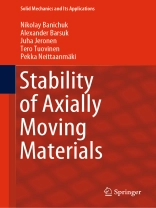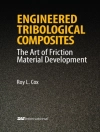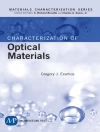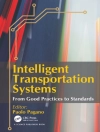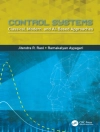This book discusses the stability of axially moving materials, which are encountered in process industry applications such as papermaking. A special emphasis is given to analytical and semianalytical approaches. As preliminaries, we consider a variety of problems across mechanics involving bifurcations, allowing to introduce the techniques in a simplified setting.
In the main part of the book, the fundamentals of the theory of axially moving materials are presented in a systematic manner, including both elastic and viscoelastic material models, and the connection between the beam and panel models. The issues that arise in formulating boundary conditions specifically for axially moving materials are discussed. Some problems involving axially moving isotropic and orthotropic elastic plates are analyzed. Analytical free-vibration solutions for axially moving strings with and without damping are derived. A simple model for fluid–structure interaction of an axially moving panel ispresented in detail.
This book is addressed to researchers, industrial specialists and students in the fields of theoretical and applied mechanics, and of applied and computational mathematics.
İçerik tablosu
Preface.- 1. Prototype Problems: Bifurcations of Different Kinds.- 1.1 Rigid column with elastic clamping.- 1.2 Elastic column and its optimization.- 1.3 Elastic rod under torsion.- 1.4 Divergence and optimization of wings.- 1.5 Stability of tensioned cantilever beam.- 1.6 Accelerating motion of rod (rocket, missile) under follower force.- 2 Bifurcation Analysis for Polynomial Equations.- 2.1 Bifurcation and parametric representations.- 2.2 Analysis of a cubic equation.- 2.3 Analysis of a quartic (fourth-order) polynomial equation.- 3 Nonconservative Systems with a Finite Number of Degrees of Freedom.- 3.1 Critical parameters and destabilizing perturbations.- 3.2 Characteristic polynomial and series expansions.- 3.3 Ideal perturbations and sufficient conditions for stability (n = 2).- 3.4 Matrices and examples of ideal perturbations.- 3.5 Stability of systems subjected to deficient perturbations and determination of the deficiency index.- 3.6 On the stability and trajectories of the double pendulum with linear springs and dampers.- 4 Some General Methods.- 4.1 Criteria of elastic stability.- 4.2 Bifurcations and multiplicity of critical loads.- 4.3 Decomposition method for bimodal solutions.- 4.4 Bifurcation and analysis of implicitly given functionals.- 4.5 Variational principle and bifurcation analysis.- 5 Modeling and Stability Analysis of Axially Moving Materials.- 5.1 General dynamics and geometric considerations.- 5.2 Kinematic relations of small deformations.- 5.3 Constitutive linear elastic and visco-elastic relations.- 5.4 Modeling of beams and panels.- 5.5 Modeling of axially moving materials.- 5.6 Transformation to weak form.- 5.7 Boundary conditions.- 5.8 Numerical examples in stability of axially moving elastic and viscoelastic panels.- 6 Stability of Axially Moving Plates.- 6.1 Isotropic plates.- 6.2 Orthotropic plates.- 6.3 Plates with a nonuniform axial tension distribution.- 7 Stability of Axially Moving Strings, Beams and Panels.- 7.1 Unified modeland exact eigensolutions for torsional, longitudinal and transverse vibration types.- 7.2 Exact eigensolutions of the traveling string with damping.- 7.3 Exact eigensolutions of axially moving beams and panels.- 7.4 Long axially moving beam with periodic elastic supports.- 7.5 Stability of a traveling beam in a gravitational field.- 8 Stability in Fluid–Structure Interaction of Axially Moving Materials.- 8.1 Basic concepts.- 8.2 Analytical solution of two-dimensional potential flow.- 8.3 Added-mass approximation.- 8.4 Numerical examples.- 8.5 Recommendations for further reading.- 9 Optimization of Elastic Bodies Subjected to Thermal Loads.- 9.1 Optimal distribution of thickness in a thermoelastic beam.- 9.2 Optimal distribution of materials in a thermoelastic beam.- 9.3 A guaranteed double-sided estimate for energy dissipation in heat conduction of locally orthotropic solid bodies.- 9.4 Conclusion.- Appendix A Cartesian tensors.- A.1 Tensor algebra.- A.2 Tensor calculus.- A.3 Integration by parts in multiple dimensions.- Appendix B Numerical integration of ODEs and semidiscrete PDEs.- B.1 Explicit Runge–Kutta methods.- B.2 Classical implicit methods.- B.3 The theoretical basis of iterative implicit methods.- B.4 Time-discontinuous Galerkin (d G).- C Finite elements of the Hermite type.- Appendix C: Finite elements of the Hermite type.- C.1 Coordinate mapping and the derivative degrees of freedom.
